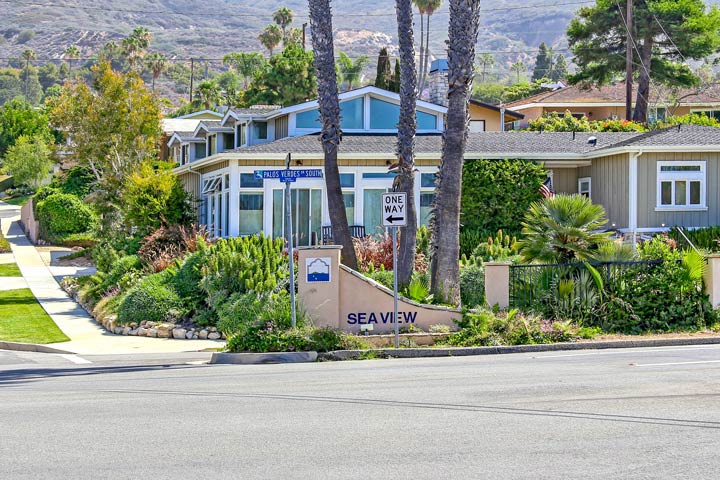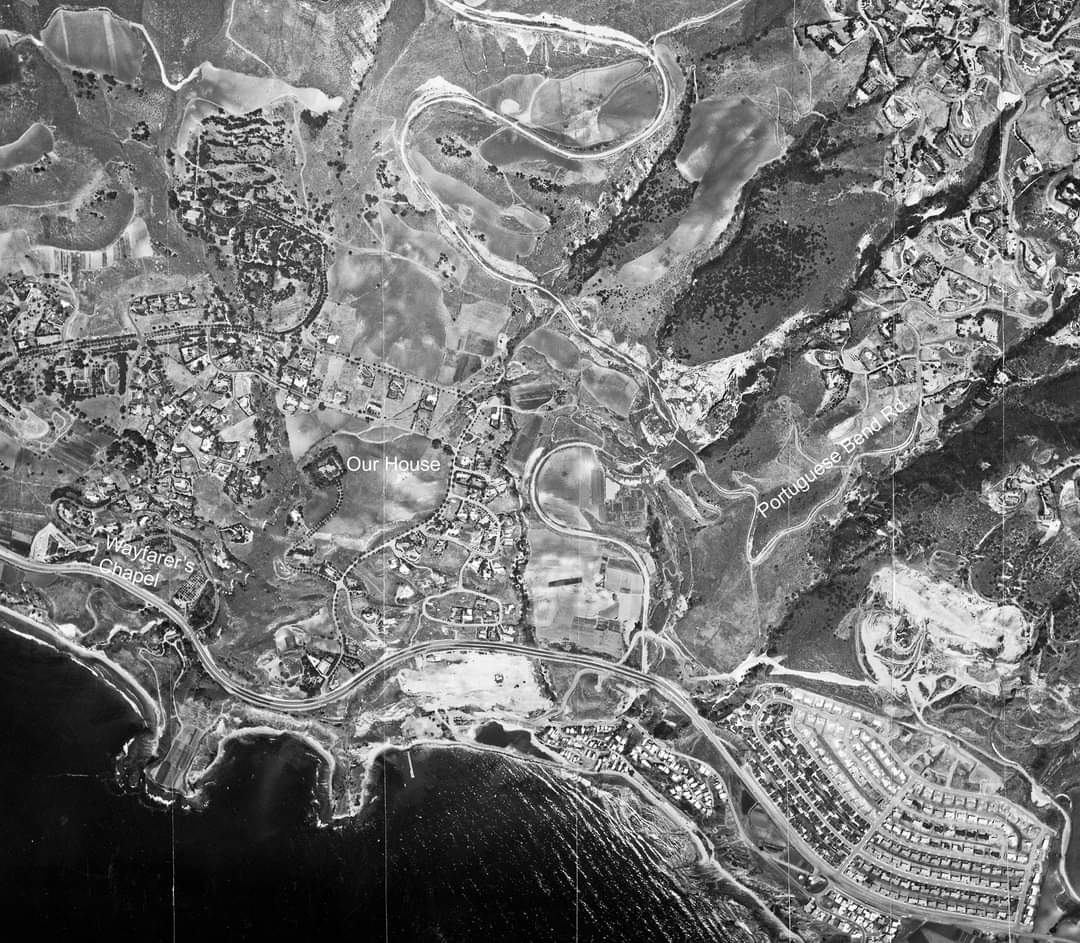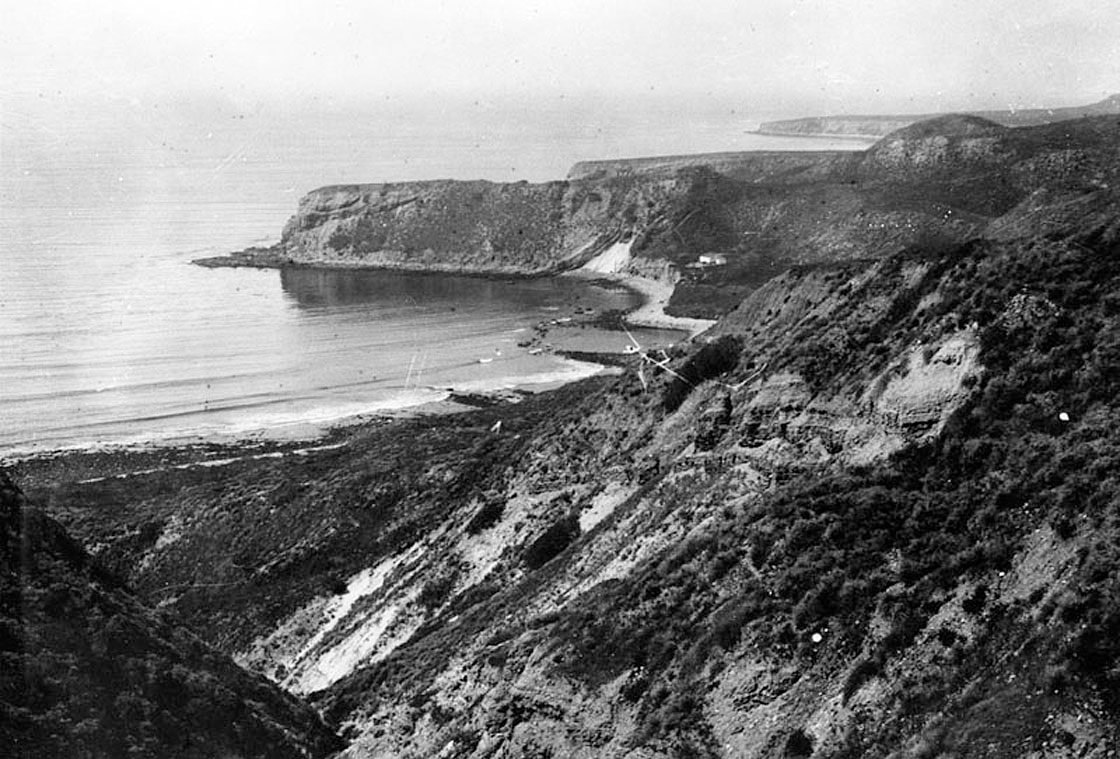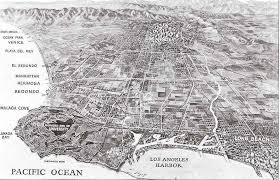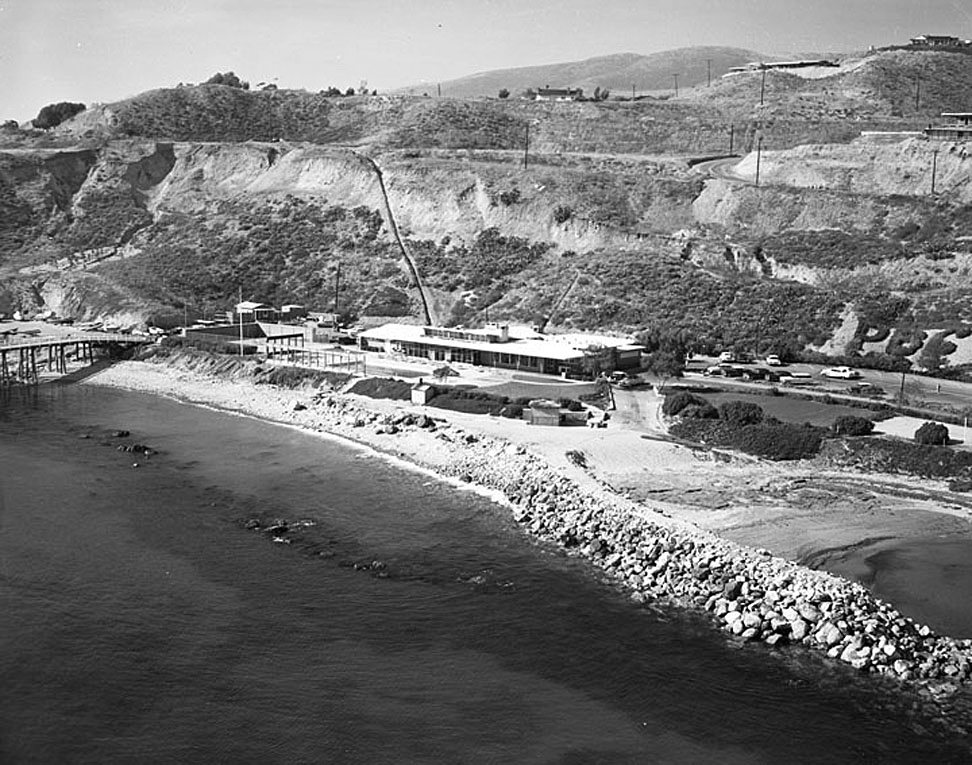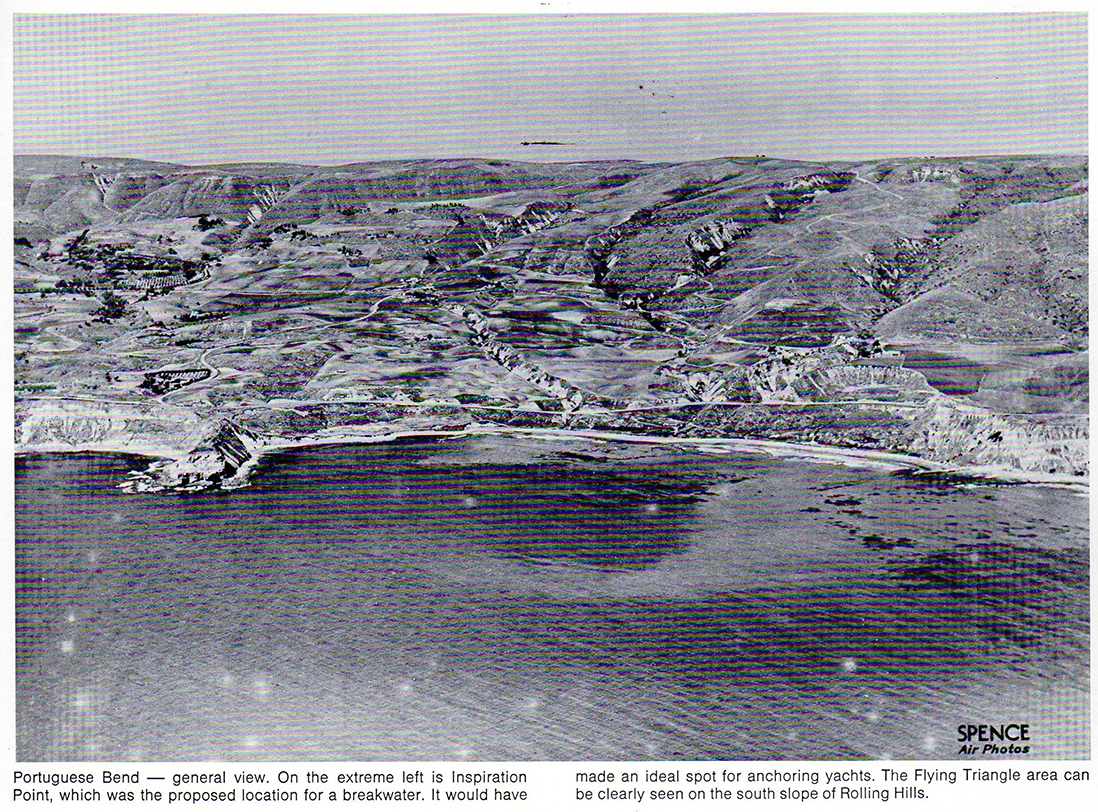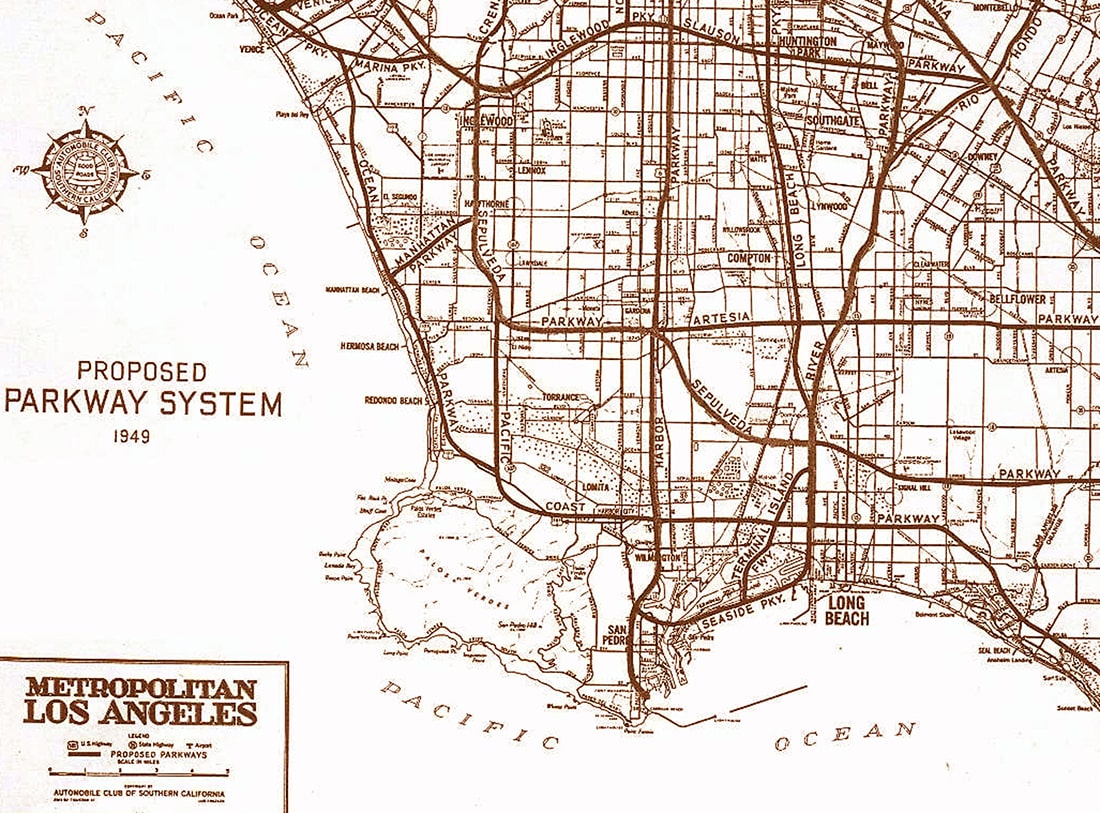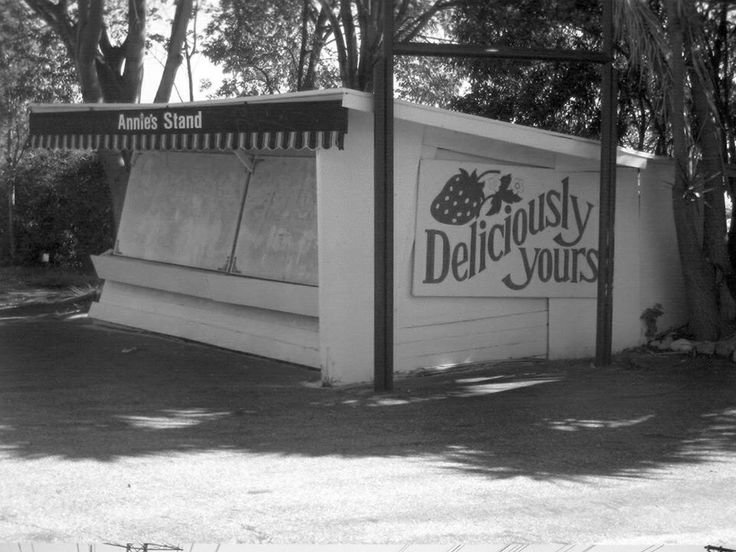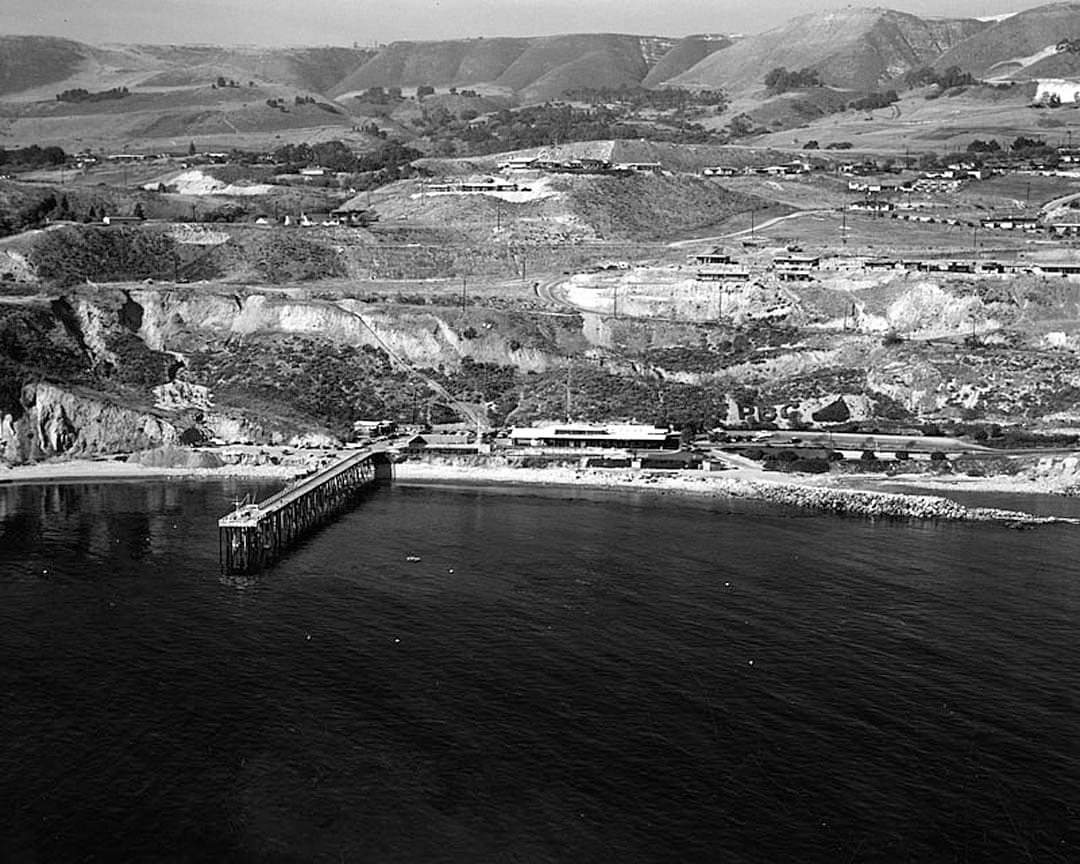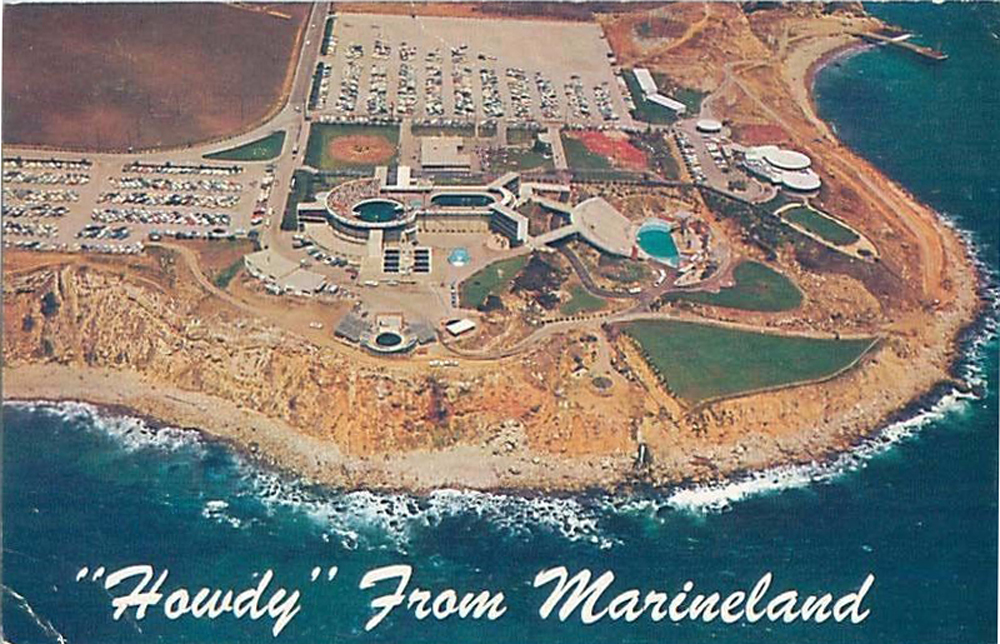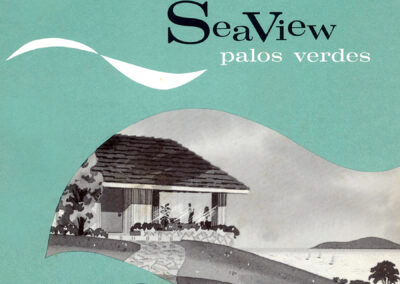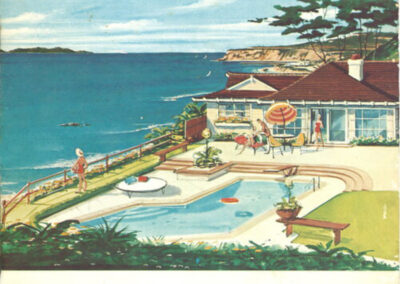A History of SeaView Palos Verdes
& the Paul R. Williams Connection.
SRA History research and content by Larry and Julie Paul.
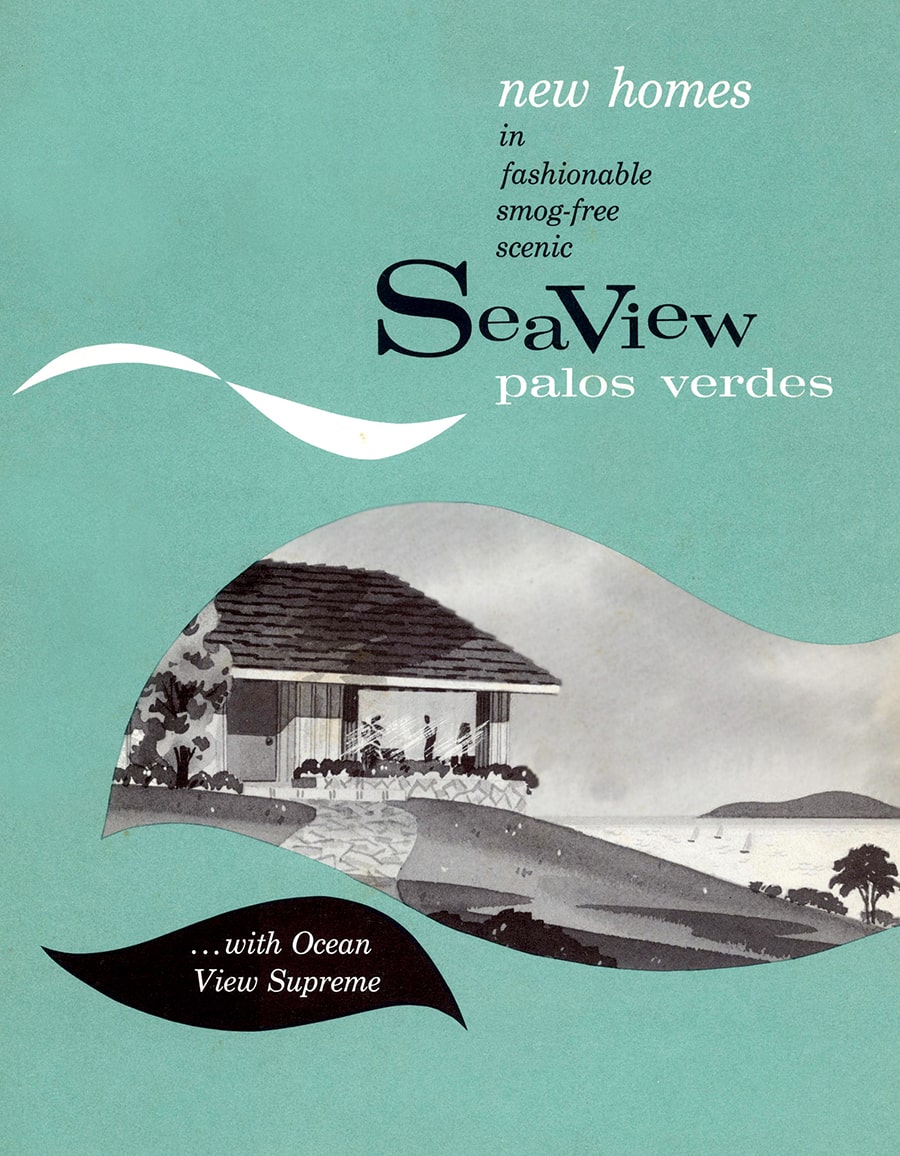
The development of the Palos Verdes Peninsula really began in 1913 when Frank Vanderlip Sr., an east coast banker, purchased 16,000 acres of Rancho de los Palos Verdes sight unseen. Vanderlip, considered to be the “Father of Palos Verdes,” chose to build his home, the Vanderlip Estates, in the area that he considered to have the best weather and best views in the peninsula, the area known as Portuguese Bend.
Explore historic images by clicking left-right arrows
The geographic borders of Portuguese Bend are between the points below the Trump National Golf Course and the resort known as Terranea, formerly the location of Marineland of the Pacific, including Inspiration and Portuguese Points and Abalone Cove. What is known as SeaView Palos Verdes today is located on the eastern section of the Portuguese Bend; however, the original name of the neighborhood was the Portuguese Bend Estates.
In the mid 1950’s, the Linde Construction Co. began grading the land and master planning the Portuguese Bend Estates.
The first 71 homes were completed in 1956; however, on August 17, 1956, disaster struck and the Portuguese Bend landslide began. This event changed the destiny of the then named Portuguese Bend Estates. While the cause of the slide began to be investigated, all construction and sales in both the Portuguese Bend gated community, the Portuguese Bend Estates, and the Portuguese Bend Club, located just below modern-day SeaView, was stopped.
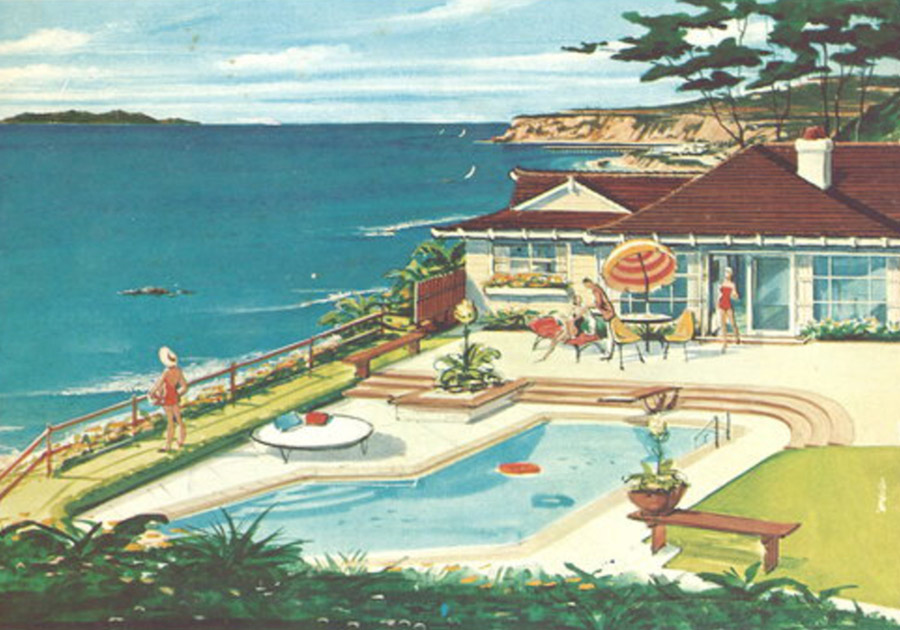
[Portuguese Bend Estates brochure cover. PHOTO courtesy Dana Graham, President of the Palos Verdes Historical Society. ]
A study conducted over many months concluded that the fundamental underlying geologic conditions under the Portuguese Bend Estates were different from those conditions under the Portuguese Bend landslide area; so, it was decided that construction and sales of homes outside the active slide area would be permitted. However, because the name Portuguese Bend was featured on an almost daily basis in the news about the fast-moving landslide that was destroying homes, it was decided to change direction and re-brand the project. In the summer of 1957 the Linde Construction Co. rebranded the existing homes in the neighborhood as the “Marina Highlands.”
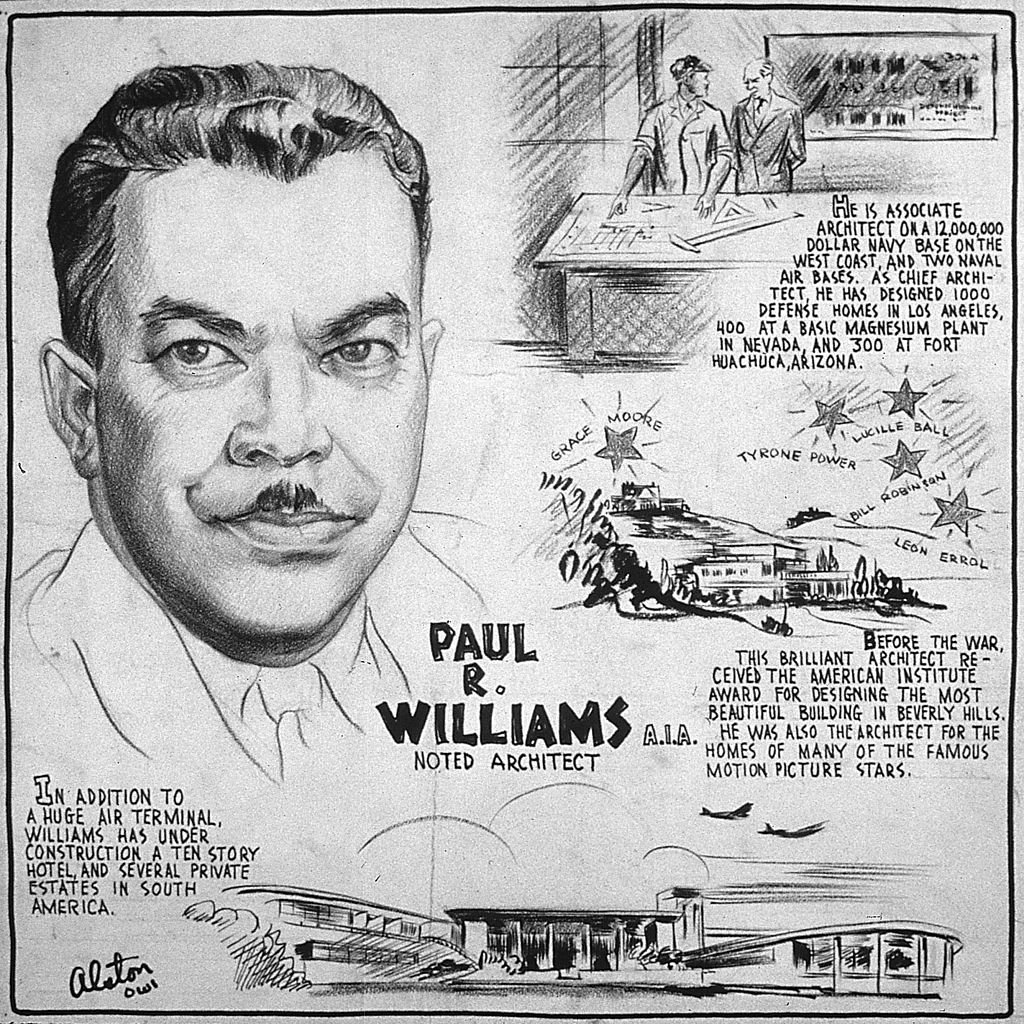
In 1923, Williams became the first African American member of the American Institute of Architects. In April 1957, Williams was given the honor of Fellowship and membership in the College of Fellows in the AIA for his “notable contribution in Public Service.”
[Illustration by Charles Henry Alston (1907-1977) for the Office for Emergency Management, Domestic Operations Branch, News Bureau. Media courtesy of National Archives and Records Administration. ]
Prior to working on SeaView, Williams had designed residential properties for famous clients like Frank Sinatra, Lucille Ball and Desi Arnaz, Danny Thomas, and Cary Grant, as well as other stars and top executives. He also provided architecture services to modest income clients. In addition to his residential work, Williams developed important commercial properties including the First AME Church, Beverly Wilshire Hotel, Los Angeles County Courthouse, and the Beverly Hills Hotel, among literally thousands of other projects in Los Angeles, the country, and the world. However, the SeaView development was the only significant tract home project he did in his long career.
In early 1959, Williams developed nine new floor plans for the remaining 190 homes that would be built in SeaView between 1959 and 1960. These 3- and 4-bedroom homes featured from 1671 to 2029 square feet of living space, and many were positioned for expansive views of the ocean and Catalina Island.
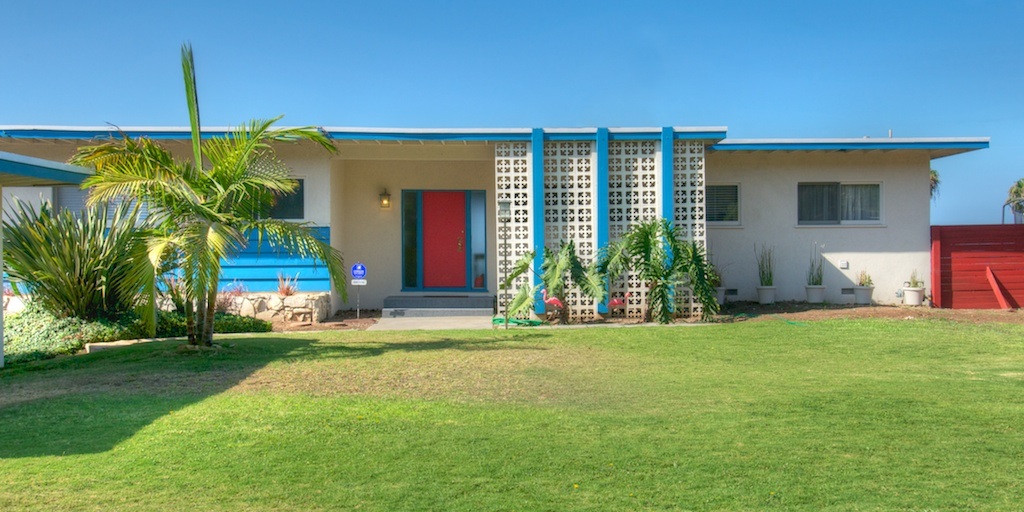
[Original Paul R Williams Design. Photo courtesy of Mark Morgan. ]
Eight of the nine floorplans were given names: the Biscayne, Riviera, Marina, Copacabana, Bermuda, Monte Carlo, Eden Roc, and Lido. However, Williams designed much more than just those nine floorplans. By developing forty-one unique front façade elevations, he kept the neighborhood from having the repetitive cookie-cutter-look of many tracts. Though all the homes were classic mid-century modern designs, the roof styles varied.

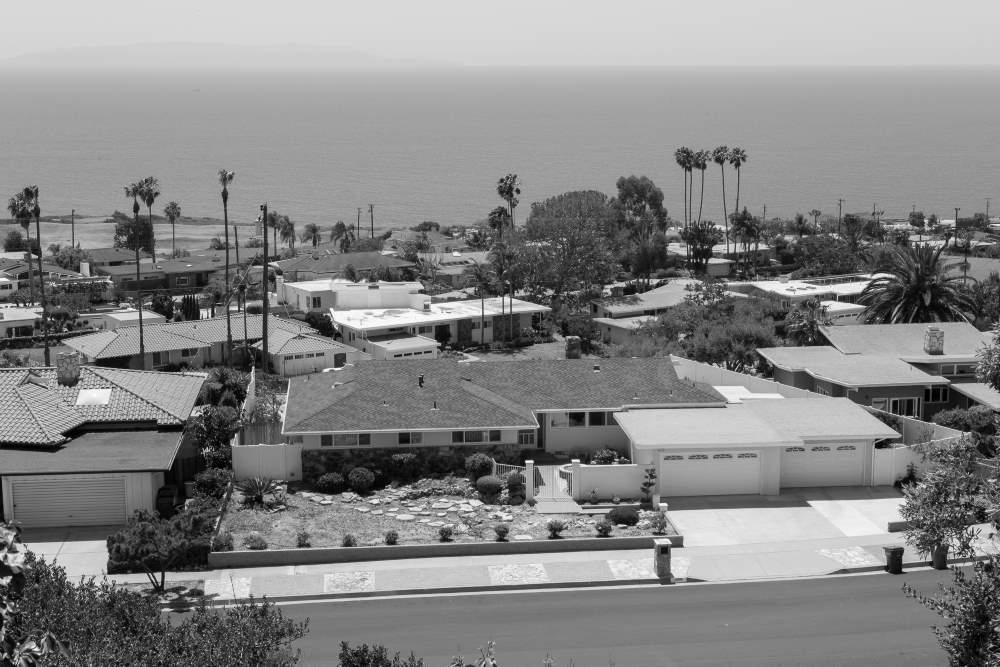
Some were flat, some peaked, some dramatically vaulted, and three were built with a butterfly-style roof. There were also nine different garage door patterns, each of which were used on different floorplans. Exterior material details varied and included several different decorative cinderblocks, local Palos Verdes stone, “Driftwood” stone, and a milled quarry stone that came from Texas.
[Seaview Community – Paul R. Williams. PHOTO © Janna Ireland from “Regarding Paul R. Williams: A Photographer’s View” by Janna Ireland (Angel City Press) ]

For the interiors, Williams used decorative screens to separate foyers or hallways from the living room while still allowing light to flow into those spaces. The homes also featured dramatic stone fireplaces, shoji screens, spacious kitchens, and large sliding glass doors that led out to backyard patios for that indoor-outdoor style of living.
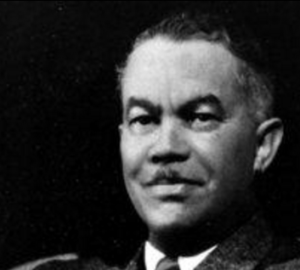 In 2017, some 37 years after his passing, Williams was posthumously awarded the Gold Medal by the AIA, its “highest annual honor recognizing individuals whose work has had a lasting influence on the theory and practice of architecture.”
In 2017, some 37 years after his passing, Williams was posthumously awarded the Gold Medal by the AIA, its “highest annual honor recognizing individuals whose work has had a lasting influence on the theory and practice of architecture.”
Visit this web page to view more Paul R. Williams’ homes within the SeaView neighborhood.
